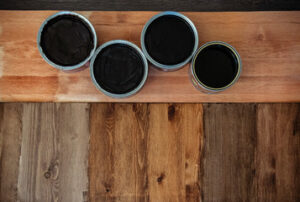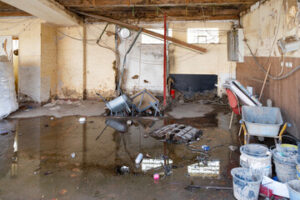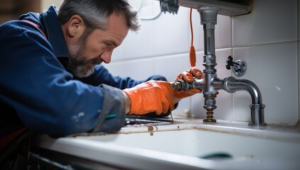Residential roofers work on the roofs of single- and multi-unit homes. They know about different roofing materials and can install or repair most residential roofs.

A well-chosen and properly installed roof can protect a home, add value to the property, and enhance its beauty. Choosing the right residential roofer requires thorough research and evaluation of qualifications. Contact Roofers In Columbus GA for professional expertise.
Residential roofers repair and replace the roofs of single-family homes or multi-unit housing complexes. They also work on other types of buildings, including schools and hospitals. In addition to installing and repairing roofs, they also inspect and assess the condition of existing roofing systems and provide estimates for new roofing systems. Roofers need to be efficient, work safely in high places, and be able to interact with clients to discuss project details and address concerns.
Experienced roofers have a solid understanding of building codes and standards and can install energy-efficient materials. They are also familiar with the different roofing materials available and can recommend options that fit your home’s style and budget. They can also help you choose a shingle color that will complement your home and increase its value.
If you are considering hiring a roofing contractor, look for someone with positive online reviews and referrals from friends and family. Read these reviews carefully, as negative ones are an indication that the company may have a problem with customer service. Additionally, make sure that the roofing company you hire offers a warranty on their work and is licensed by your state.
Many large companies specialize in roof repairs and replacements, offering a range of services. They typically have a dedicated point person on site to answer questions and to interface with the crew. These people often offer a variety of financing options and can be helpful in navigating the insurance process. However, they tend to focus on larger jobs and may be less interested in providing a great customer experience.
A reputable roofer should have a solid track record of working with local homeowners and businesses. They should be able to handle multiple projects at once and have the tools and equipment needed to complete them in a timely manner. They should also be able to work in a variety of weather conditions and be comfortable working in high places.
Residential roofers can sometimes break into commercial roofing, but this is usually a challenge because it requires a higher skill set and different client expectations. In addition, it is often more time-consuming than residential roofing. It is also important to understand that there are different payment terms, and it can take a while for you to receive payments for your work.
License
When choosing a residential roofer, it’s important to find one who has the proper license and insurance coverage. These requirements vary by state, so it’s important to check with your local authorities for the specific guidelines in your area. Additionally, it’s crucial to choose a roofing professional with the right skills and experience for your project. This will ensure that your roof is in good hands and that you’re receiving the best value for your money.
To obtain a roofing contractor’s license in Alaska, applicants must first complete pre-licensing education and submit the required documentation. They then need to pass the examination and provide proof of liability insurance and workers’ compensation coverage to meet the state’s requirements. In addition, Alaska requires roofers to register as specialty contractors with a roofing classification. Those who do not comply with the state’s licensing regulations may be subject to stiff fines or imprisonment.
While the road to becoming a residential roofer can be long and arduous, the process is well worth it. The benefits of this career include a solid salary, flexible hours, and an opportunity to advance in the field. In addition, a roofer’s license provides a good standard of workmanship and safety, and it protects homeowners from fraudulent contractors.
Commercial roofers have different skill sets than residential roofers, as they work with larger-scale projects that require more complex roofing systems. In addition, commercial roofers must understand the multitude of material options and how to properly repair and patch them all. Residential roofers, on the other hand, work primarily with asphalt shingle roofs and require less specialized skills.
When selecting a residential roofer, you must carefully evaluate the qualifications and prices of each candidate. It is also important to ask about any warranties and guarantees that the roofer offers. In addition, you should check that the roofer has worker’s compensation and general liability insurance. Finally, you should choose a residential roofer with excellent customer support practices. After all, a great roof is the foundation of a home, so it’s critical to find someone you can trust with your investment.
Insurance
Homeowners understand that accidents happen, and they often prefer to engage with roofing professionals who carry general liability insurance. This type of policy covers third-party property damage, bodily injury, and advertising injuries, among other risks. It may not cover all losses, however; if you’re sued for a large sum due to an unavoidable accident, the homeowner can tap into their own personal assets and insurance to cover the costs. This is a risk homeowners don’t want to take, and they may ask you for proof of general liability insurance before you perform any work.
Besides general liability, roofers also need workers’ compensation insurance for employees injured at the workplace. This type of insurance reimburses employees for lost wages and medical expenses. It also protects them from lawsuits that could arise out of a workplace-related injury. Depending on local laws, this type of insurance might be mandatory for roofing businesses.
Errors and omissions insurance, sometimes known as professional liability insurance, is another policy that may be useful for roofing contractors. It covers the legal fees and damages if a client sues you over your advice or recommendations, even if they don’t succeed in proving that you were negligent.
Other types of insurance that may be beneficial for roofing companies include commercial auto insurance, business owners policy (BOP), and builder’s risk insurance. The former provides coverage for vehicles and equipment used for business purposes, which is usually excluded from a personal auto insurance policy. The latter protects against damage and loss if a building under construction is damaged by an unexpected event, such as a hailstorm or hurricane.
The cost of roofing contractor insurance varies based on the policy’s coverage needs, limits, and claims history. Other factors that can influence the cost include the number of insured employees, your business location, and the size of your payroll. You can also save money by purchasing a combined business owners policy that covers general liability, commercial auto, and property insurance all in one policy. A deductible, which is the amount you agree to pay out of pocket before the insurance company starts covering expenses, may also affect your premiums.
Pricing
Residential roofers can charge different prices depending on the material they use, the size of your home, and whether you’re having an insurance-related repair or replacement. The geographical area can also influence the cost, with some areas having higher or lower costs due to local materials, housing costs, and weather conditions.
If you’re repairing or replacing an existing roof, the roofing company may include the cost of any underlying problems in their estimate. This can include issues like rotting wood, mold growth, or missing shingles. These underlying problems can add up to significant additional costs. The roofer should explain any underlying issues to you and give you a complete list of the work that’s needed.
Service roofers focus on servicing homeowners in their areas, and their crews are able to respond quickly to calls. They can handle both insurance and non-insurance jobs and offer a wide range of options, including ENERGY STAR roofing materials. They often have a salesperson who can help you sort through your options and choose the best options for your situation. They may offer long-term warranties and high-quality materials at competitive prices.
Retail sales roofers do normal roof replacements and usually have a dedicated customer service department. Their sales presentations can be up to four hours long, and they’ll start with their highest-priced options. You’ll have to negotiate hard for the pricing you want. They’ll likely offer you financing, and their terms are typically better than those of service roofers.
Storm chasers are primarily insurance-focused and follow storms around the country. They’ll go door-to-door after a tornado, hurricane, or hailstorm and offer to do an insurance check of your roof. They can offer a quick turnaround and are well-known for taking care of the insurance process. They’re also known for offering low warranties and cheap materials.
You can sometimes finance a new roof through a personal loan from a bank or credit union. However, this method can carry high interest rates and can put your home at risk if you’re not able to pay back the loan. You can also borrow money from a family member or take out a home equity loan, which will allow you to access a line of credit that you can use for other home improvement projects.


